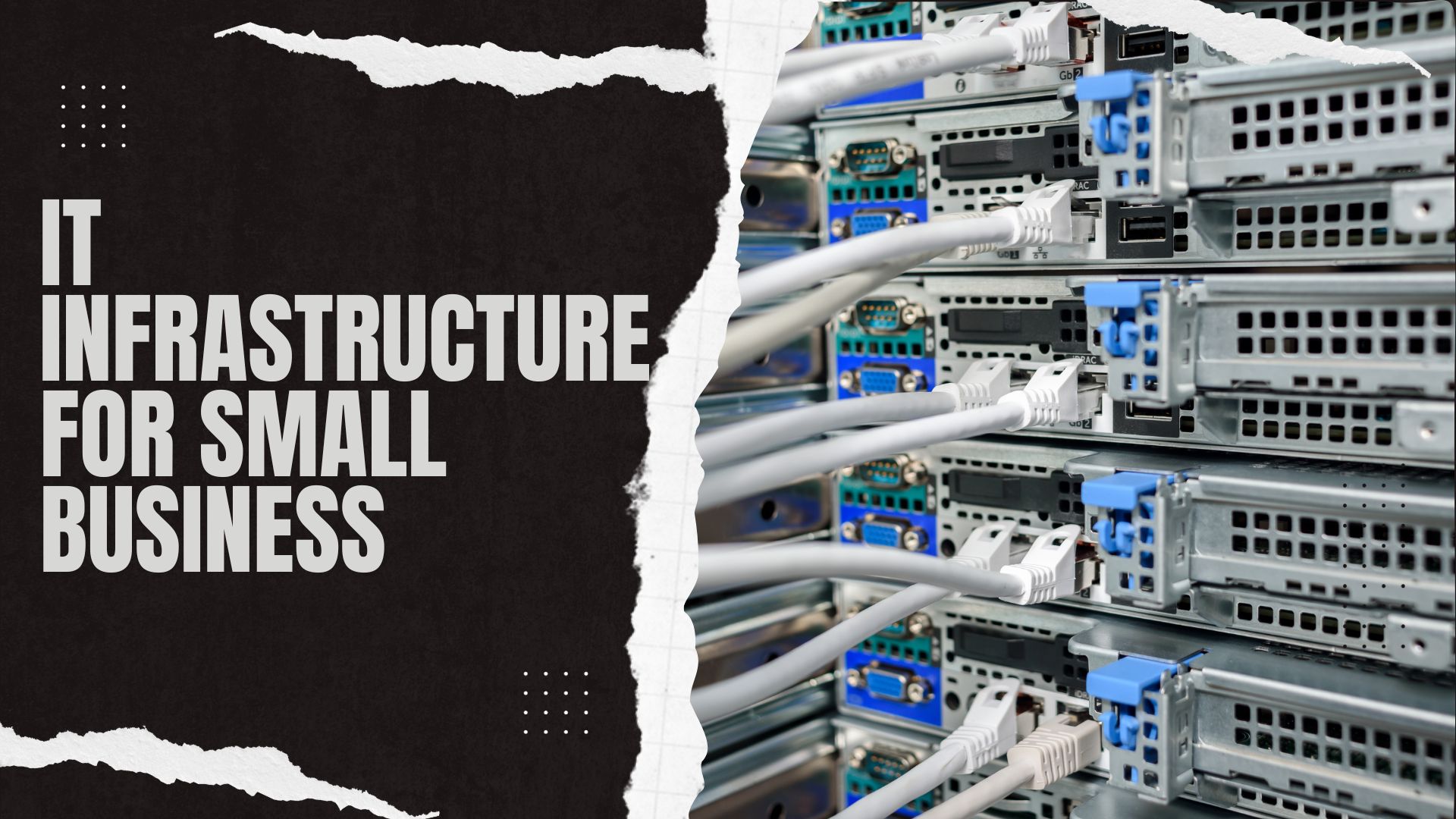IT infrastructure for small business encompasses the hardware, software, and networking components required for operations. Efficient setups optimize productivity and scalability at a cost-effective investment.
Small businesses must tailor their IT infrastructure to meet specific operational demands while ensuring flexibility and scalability as they grow. Choosing the right technology stack is crucial, which typically includes workstations, servers, network devices, and business-specific software. A streamlined IT infrastructure can drive innovation, enable effective communication, improve data management, and protect against cybersecurity threats.
Building a robust IT system requires planning and investment, but it’s a critical foundation for any modern company looking to thrive in the digital economy. It is essential for small businesses to undertake regular IT audits to refine their infrastructure in alignment with evolving business goals and the ever-changing technological landscape.

Credit: ifeeltech.com
Introduction To It Infrastructure In Small Businesses
Small businesses increasingly rely on technology for day-to-day operations, which makes IT infrastructure foundational to their success. A robust IT backbone empowers these enterprises by enabling efficiency, scalability, and communication. It supports a variety of functions such as customer relationship management, financial transactions, and data analysis, which are critical for staying competitive.
Investing in a reliable IT infrastructure is not merely about having computers and servers. It involves a comprehensive ecosystem including networking equipment, software solutions, cybersecurity measures, and data storage systems that work together seamlessly. For small businesses, this investment can drive innovation, enhance customer experiences, and ensure that operations can withstand and recover from disruptions.
Essential Components Of Small Business It Infrastructure
Small businesses must carefully select their IT hardware to ensure efficient operations. Computing devices, such as servers, desktops, and laptops, form the backbone of IT infrastructure, along with necessary network equipment including routers, switches, and wireless access points. Ensuring compatibility and scalability within hardware components is crucial for seamless functionality.
Software solutions play a pivotal role in streamlining daily tasks, enhancing team collaboration, and enabling efficient project management. Businesses should opt for software that aids in improving productivity and simplifies operations management. Utilizing cloud services can be transformative, enabling small businesses to scale operations cost-effectively. The flexibility of cloud platforms supports growth by providing on-demand resources and services.
Cybersecurity systems are paramount to safeguard business data against threats. An effective cybersecurity strategy includes firewalls, anti-virus software, and intrusion detection systems. Regular updates and employee training on security protocols are essential to maintain a robust defense against cyber-attacks.
Planning Your It Infrastructure
Planning your IT infrastructure necessitates a thorough analysis of both your business’s immediate and long-term requirements. Prioritizing these needs ensures that your technology investments align with your company objectives and growth. Establishing a comprehensive IT budget ensures financial readiness for both the initial setup and future maintenance costs.
Businesses must decide between setting up an in-house IT team or outsourcing to specialized service providers. In-house IT might offer more control and direct oversight, while outsourcing can be cost-effective and provide access to diverse expertise. Cost-analysis and strategic planning will guide this decision, taking into account the size of your business and its specific technological demands.
Setting Up Your Small Business It Infrastructure
Setting up a well-structured IT infrastructure is pivotal for small businesses seeking to pave the way for growth and efficiency. To ensure a seamless network setup and management, best practices must be followed. These include consistent network monitoring, having a clearly defined IT policy, and investing in reliable hardware that can scale with the business needs.
- Ensure regular updates and maintenance to avoid vulnerabilities.
- Opt for professional-grade routers with robust security features.
- Establish strong network access control to protect sensitive data.
Choosing the right business software is a critical step that requires an understanding of the company’s operational demands. Small businesses should focus on software that offers scalability, user-friendliness, and integration capabilities. Deploying CRM and ERP systems can streamline processes and enhance productivity.
Adopting cloud services allows for flexibility and cost savings. Small businesses are encouraged to integrate services like cloud storage, backup solutions, and SaaS applications to facilitate remote work and collaboration. Ensuring that these services are properly integrated with existing systems is essential for a smooth operation.
Finally, cybersecurity is indispensable. Implementing measures such as firewalls, anti-malware software, and multi-factor authentication adds layers of protection. Regularly training employees on security best practices and establishing a disaster recovery plan are also crucial steps in safeguarding business data.
Maintaining And Upgrading Your It Infrastructure
Conducting regular IT audits and performance monitoring is crucial for ensuring the reliability and efficiency of a small business’s IT infrastructure. Through thorough evaluations, businesses can identify areas in need of improvement and take proactive steps to prevent potential system failures. Consistent monitoring allows for the detection of bottlenecks and security vulnerabilities, permitting timely interventions.
Keeping software and hardware components up-to-date is essential for the smooth operation and security of IT systems. Small businesses should establish routine update procedures, which include patch management and replacements of outdated equipment. This strategy not only secures against vulnerabilities but also ensures compatibility with new technologies.
Employee training on new technologies and security practices is a cornerstone of maintaining a robust IT framework. By educating staff, a business can bolster its first line of defense against cyber threats. Ongoing training sessions keep employees vigilant and informed about the latest security protocols and IT tools, significantly minimizing the risk of human error.
Future-proofing Your It Infrastructure
Embracing automation and artificial intelligence (AI) is crucial for the scalability of any small business. By leveraging AI-driven tools, companies can streamline operations, reduce manual errors, and ensure consistency across tasks. This adoption not only enhances efficiency but also helps in accumulating valuable data insights necessary for strategic decision-making. The integration of AI can be seen in customer service through chatbots, in accounting with automated invoicing, and in marketing campaigns with personalized content delivery.
The shift to mobile-first business models recognizes the ubiquity of smartphones in consumer behavior. Businesses adapting to this model invest in responsive web designs and mobile applications, thus improving customer interaction and service delivery. Ensuring that all digital assets are optimized for mobile use is not a trend but a necessity as search engine algorithms continue to prioritize mobile-friendly websites.
Adapting to emerging technologies and market trends is a dynamic process where businesses must continually observe and implement new IT strategies. Technologies such as blockchain, the Internet of Things (IoT), and cloud computing are transforming business operations, offering enhanced security, improved connectivity, and flexible data storage options. Staying responsive to these advancements secures a competitive edge and positions businesses to capitalize on new opportunities presented by the ever-evolving technological landscape.
Conclusion: The Continuous Evolution Of Small Business It
Small businesses must navigate the complexities of technological advancements with agility and foresight. By adopting a flexible IT infrastructure, these enterprises can leverage the power of technology to drive growth and remain competitive. Embracing cloud technologies, robust cybersecurity measures, and streamlined communication systems are critical components for success.
It’s essential for small businesses to recognize that investing in an up-to-date IT infrastructure is not a one-time event but a continuous process. As the market evolves, so should their technological strategies to ensure they remain innovative and efficient. The key is to maintain an infrastructure that is both scalable and adaptable to the changing demands of a technologically driven market.

Credit: www.dell.com

Credit: www.facebook.com
Frequently Asked Questions Of It Infrastructure For Small Business
What It Infrastructure Does A Business Need?
A business IT infrastructure typically requires servers, storage solutions, networking equipment, cybersecurity systems, and backup capabilities. Effective software and hardware management is also essential.
What Are The 7 Components Of It Infrastructure?
The seven components of IT infrastructure are Hardware, Software, Networking, Data Storage, Data Centers, Human Resources, and Policies/Procedures.
What Are The 4 Categories Of It Infrastructure?
The four categories of IT infrastructure are hardware, software, networking, and data centers. Each plays a crucial role in supporting business operations and enabling communication across systems and devices.
What Are The 6 It Infrastructure Components?
The six IT infrastructure components are hardware, software, data, networking, data centers, and human resources.
Conclusion
Navigating IT infrastructure can elevate your small business to new heights. A tailored setup empowers growth and efficiency. Remember, investing in robust IT solutions pays dividends in productivity. Start simply, scale wisely. Your tech journey is integral to success. Embrace it and thrive.

Victoria Banks is a respected figure in the financial realm, specializing as an investment and savings expert. With a robust background in finance and wealth management, Victoria Banks has established herself as a trusted advisor in the delicate balance between investment growth and prudent savings strategies. Her career is marked by a strategic approach to financial planning, where she assists individuals and businesses in optimizing their investment portfolios while prioritizing long-term savings goals.
Victoria Banks’s expertise lies in crafting personalized investment and savings strategies tailored to the unique needs and aspirations of her clients. Her insightful analyses and ability to navigate market dynamics enable her to guide individuals towards sound investment decisions that align with their overall financial objectives. As an investment and savings expert, Victoria Banks contributes to the financial well-being of her clients by fostering a comprehensive understanding of the symbiotic relationship between strategic investments and disciplined savings practices. Her commitment to financial literacy and wealth-building has positioned her as a go-to authority for those seeking a harmonious approach to building and safeguarding their financial futures.


